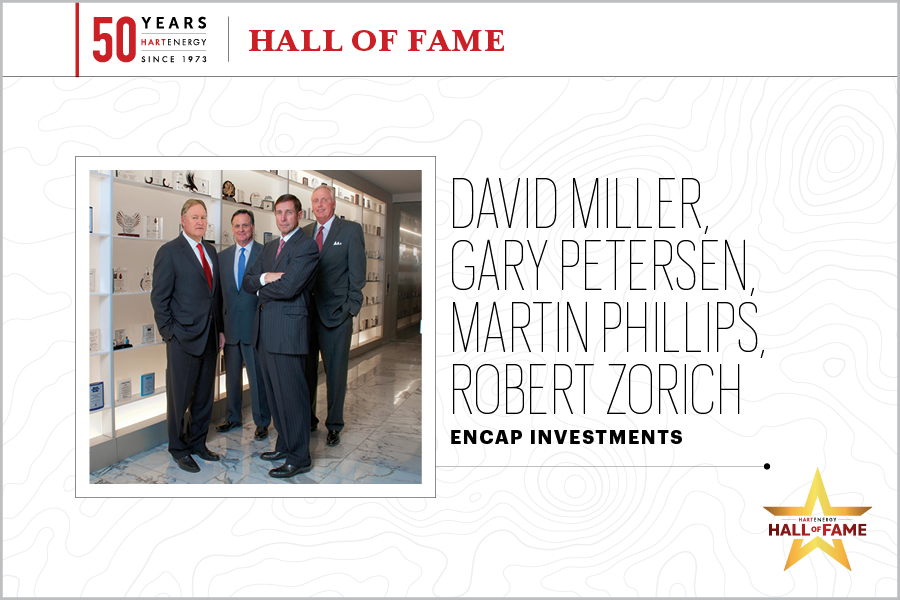Zorich, Phillips, Petersen, Miller
Editor's note: This profile is part of Hart Energy's 50th anniversary Hall of Fame series honoring industry pioneers of the past 50 years and the Agents of Change (ACEs) who are leading the energy sector into the future.

Republic National Bank of Dallas, once the largest bank in Texas, is long gone, but the business relationship among four men who worked there outlasted—and greatly outsized—the bank.
In 1988, just two years after the oil industry suffered one of its worst crashes, Robert Zorich, Martin Phillips, Gary Petersen and David Miller formed EnCap Investments, a cautious, low-risk oil and gas finance business. With expertise from making loans and working with engineers at the bank, the EnCap founders situated their new business between the energy industry and institutional investors, which, at the time, were relative newcomers to energy investing.
“Instead of loaning money against oil and gas properties as we had done at the bank, we would make slightly higher-risk loans in the properties, and our first funds were mezzanine loan funds,” Petersen said. “We just went up one notch on the risk spectrum, loaned money and received a small amount of equity in the properties. Later this structure morphed into project equity investments and finally into private equity as we know it today. Now, we back management teams which have multiple projects within their companies.”
Along with mezzanine debt, the second pillar of EnCap’s start was oil and gas producing property acquisition funds.
“We did that because that’s what the institutional world understood and would embrace,” Phillips said.
Zorich said the four worked to find investors and craft the financial products they would like and the industry could use as it limped out of the oil crash of 1986.
“We set out to find institutions who liked well-collateralized financial products, and the insurance companies were the primary buyers of that financial product. We lined up some insurance companies to be our initial investors and everything that we did back then, they could approve. They signed up to invest, but we had to get their approval on each investment,” he said. “Our activity was all very low-risk stuff, all engineering, no exploration ever.”
Miller added, “We felt confident in our ability to source opportunity, which back in those days was principally about acquisition, not drilling.”
In the mid-1990s, the company moved from debt to equity and put together the first fund of significant size, $480 million, in 1997. A track record of successes positioned EnCap to be one of the major financiers of the shale revolution when it started in 2008.
In another example of EnCap shifting in changing circumstances, Petersen said the firm now holds companies much longer to benefit from their hefty free cash flows.
The company has grown to 75 employees and funds more than $40 billion.
“EnCap would never hire me today,” Phillips said, half joking as he pointed out that the company now attracts people much better educated and accomplished than he was when he helped found the company.
Miller said CEOs often ask him how four business partners did not just achieve so much but stuck together for 35 years. He said compromise was a mainstay of their four-way partnership, and no one would ever “pound the table.”
“We never had a king,” Miller said. “We were all contributing to the success of EnCap and fundamentally helping each other create wealth, and that’s pretty powerful.”
—Patrick McGee, senior editor, finance
